On a warm, late-July afternoon, Deirdre Heekin ’89 was checking her Vergennes vineyard. The four-acre parcel on a former dairy farm boasts a panoramic view of the Adirondack Mountains across Lake Champlain, but Heekin was focused elsewhere. Carefully, she pulled apart long tendrils of leaves and cradled each cluster of fruit with one hand while picking off unhealthy grapes with the other. “We touch every bunch,” she said, no small task in a vineyard that yields about nine tons of grapes each year. Neat piles of pruned branches followed a gentle slope down the line of trellis posts bearing the names of varieties cultivated in each block: marquette, la crescent, brianna, and frontenac.
These cold-hardy hybrids are deemed grapes non grata by many fine wine authorities, pale pretenders to the “noble” wine grapes like legendary Burgundian pinot noir and Piedmontese nebbiolo. Bred from American native wild species crossed with European Vitis vinifera, such hybrids were designed to thrive through short growing seasons and harsh winters and are now cultivated across Canada and the northern U.S. And yet—despite the fact that modern-day versions of the most famous French grapes are themselves pest-resistant hybrids developed after the mid-19th-century phylloxera scourge—northern-climate hybrids are, in the words of Imbibe magazine, “the Rodney Dangerfield of the wine world: no respect.”
For the last decade, armed with her thoughtfully grown and made La Garagista wines, Heekin has been staging a peacefully persistent—and surprisingly successful—insurgence in defense of these hybrids. “We think about them as regional varieties. It’s about diversity,” she explained.
“To me, they’re uniquely American because we’re a melting pot, a big old mish-mash.” Their sturdiness and adaptation to her climate also permits Heekin to farm as she believes best: using organic and biodynamic practices, without synthetic chemicals, and, as she puts it, “working with nature rather than against it,” to produce wines that are distinctively of Vermont. Really, though, wine from Vermont? Made with grapes you’ve never heard of?
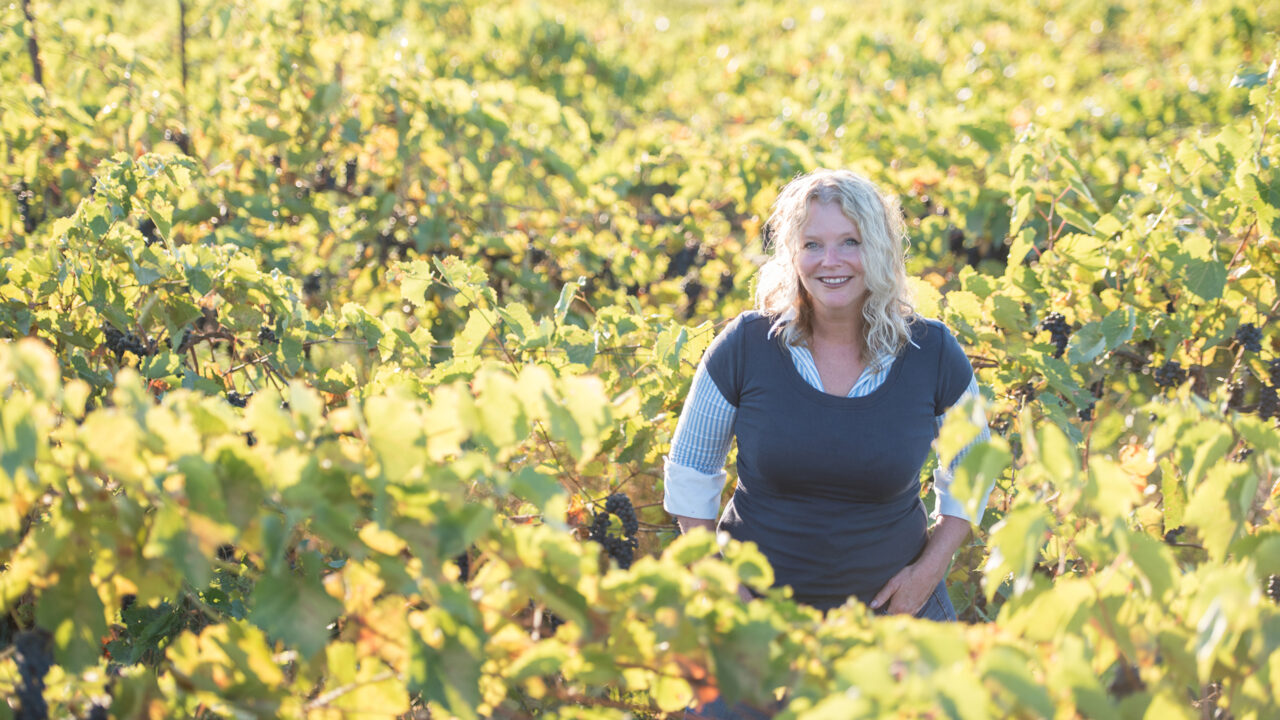
Heekin and her husband, Caleb Barber ’88, knew what they were up against when they named their tiny winery La Garagista. The French garagiste movement of the late 1970s and early ’80s set out to prove one didn’t need to own a château in Bordeaux to make the finest wine. For a new winemaker in a region with no wine heritage, working with grapes no one took seriously, it was a bold reference.
But it turns out to have been prescient. Heekin, La Garagista’s winemaker of record, has since been broadly recognized as a game changer, named one of five “rule-breaking winemakers to know” by Food & Wine magazine, credited with creating a new regional model that could broaden the geography and criteria for world-class wines.
Influential New York Times wine critic Eric Asimov was a notable early convert to the La Garagista camp. After he visited the couple’s diversified home farm and winery in Barnard, Vermont, in 2015, he described Heekin’s wines as “so soulful and delicious, they challenge crucial assumptions long taken for granted.” Later that year, he highlighted her 2013 “floral, spicy, lively” Damejeanne, a blend of red marquette with a little white la crescent, among his top dozen bottles of the year. “I never imagined I would fall in love with a Vermont wine,” he acknowledged.
Sparked by Asimov’s enthusiasm, positive attention for La Garagista built while Heekin continued working steadily toward her goals. Quietly confident but without a hint of hubris, she listens as much as she talks. She constantly seeks to better understand how to coax the best out of the land and the grapes of Vermont, poring over geology maps and enthusiastically identifying types of rock and clay. Rather than winemaker, she prefers the term “winegrower” based on her deep belief that wine is made in the field, not the cellar. “I just think of myself as someone who’s trying to hone a craft,” Heekin said, “following agricultural practices and doing work in the cellar to provide the best expression of place.”
“Deirdre has vision. She is one of the most sensitive and intuitive winemakers I have ever met,” said wine journalist and author Alice Feiring, another early supporter. “She figured out how to make wines that were an expression of Vermont, not California wannabes. Anyone can make wine, but not everyone has something to say.”
The most recent 12 months have delivered a trio of high-profile accolades that have propelled Heekin and her work to a broader stage. She was named a finalist for Wine Enthusiast’s Winemaker of the Year and a semifinalist for the James Beard Foundation’s Outstanding Beverage Professional of 2017. She also earned the title of Imbibe’s Wine Person of the Year.
Not only is Heekin “singlehandedly putting Vermont wines on the map,” wrote Wine Enthusiast, “she’s also proving that hybrid grape varieties can make serious wines. And she’s doing it all using biodynamic farming practices with minimal intervention.” Imbibe highlighted Heekin’s commitment to forging her own path: not trying to mimic European wine styles but, instead, allowing the lesser-known grape varieties to speak for themselves to produce wines of “head-turning clarity and beauty.”
Such acknowledgment, said Mitchell Davis, chief of strategy for the James Beard Foundation, “shows that people are paying attention” not only to Heekin, but to new wine regions and grape varieties and those practicing low-input farming and winemaking. “She has broken through.”
While honored by the recognition, Heekin hopes it signals a meaningful shift of perspective within the wine world. “It’s about looking forward, about hybrids and the little guys,” she said, referring to small wineries. “It’s really encouraging for those of us who make wine while caring for the land and thinking about climate change.”
The resilience of hardy hybrids, Heekin believes, can help growers cope with increasingly unpredictable weather patterns and produce wines with the least possible interventions: no synthetic pesticides, herbicides, or fertilizers in the vineyard and no additives or technology-based manipulation in the winemaking cellar. The resulting wines fully deliver the distinctive character of a specific place during a particular season, what the French call terroir. “In a world where homogeneity is becoming more and more the norm, why would we want to make everything taste the same?” she wrote in her 2014 book, An Unlikely Vineyard: The Education of a Farmer and Her Quest for Terroir.
It was this book, Heekin’s third, including one coauthored with Barber, that piqued Asimov’s interest. “What was inspiring for me,” he reflected, “was the way she saw wine’s place as part of a complete and diverse farming life.” It reminded him, he said, of the traditional European wine model. “It pays to be a brilliant writer writing about your own wine,” he added with a chuckle.
When he tasted the wines for the first time, Asimov recalled that they obliged him to reevaluate his own negative impression of hybrid grapes. “They were a real eye-opener,” he admitted. “They do taste different, not familiar in the way vinifera wines are, but they were great. I realized if wines can be this good made from hybrid grapes, then we really need to step back and reconsider. It’s like discovering a bunch of different colors to paint with.”
Just as Asimov never imagined he’d fall in love with a Vermont wine, Heekin never imagined she would become a Vermont winemaker.
Heekin, originally from Indiana, and Barber, who grew up in southern Vermont, met at Middlebury in the dance program. “It was a little bit of a lightning strike,” acknowledged Heekin with a smile. “I think it took about four days from the day we met.” After they graduated with degrees in English and film (Heekin) and German and philosophy (Barber), an Italian classmate and fellow dancer invited them to come work with her in Italy. The couple married and bought one-way tickets for a yearlong working honeymoon teaching modern dance and English.
In Italy, they fell for the culture, specifically how everyday life centered on gathering around the table; enjoying simple, good food and wine; and valuing the land and tradition that anchored it all. When the couple returned to settle in Vermont, “we knew that we wanted to work for ourselves and do something in food,” Barber said, “and the idea of going to our workday apart from each other was just not interesting to us.”
After building skills in restaurants in both Vermont and Italy, in 1996 the couple opened a small bakery and restaurant in Woodstock called Pane e Salute, which translates to “bread and health.” They grew much of their own produce for the menu of authentic, unfussy Italian dishes like crisp-crusted Tuscan pizza and saffron-scented risotto, earning national acclaim from media including Bon Appétit and Travel & Leisure.
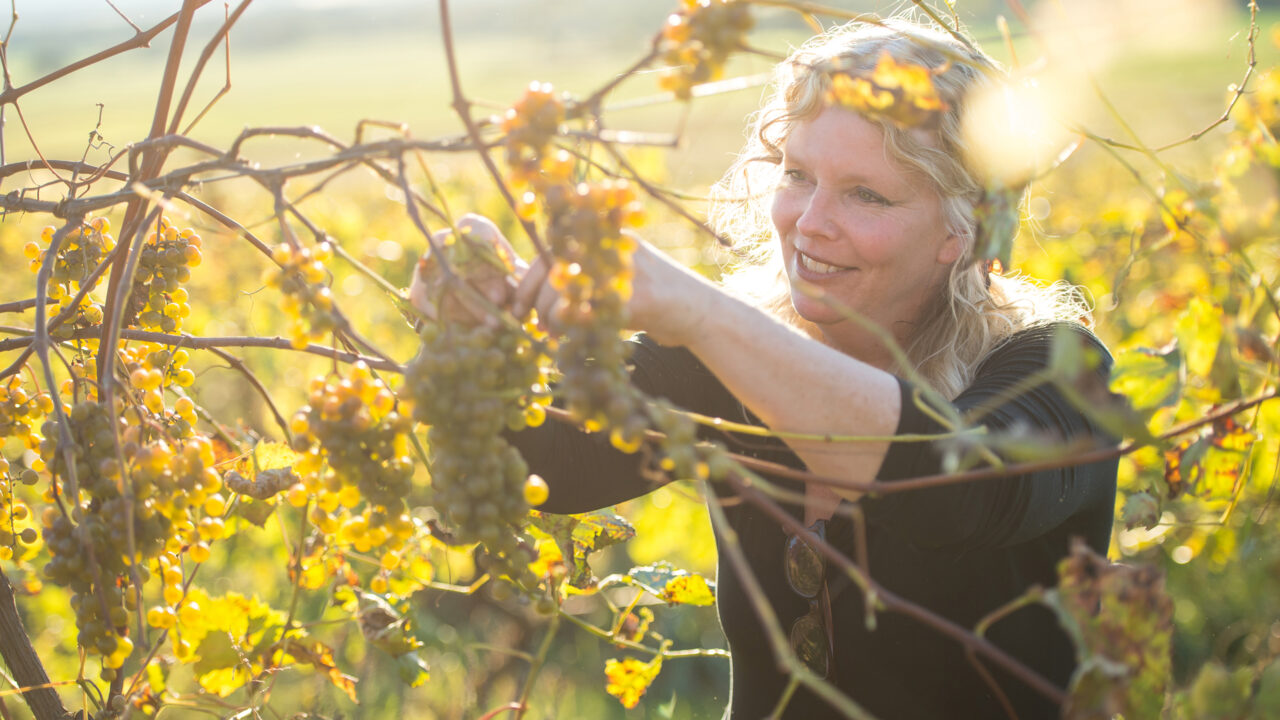
At Pane e Salute, Barber cooked and Heekin ran the front of the house. From the outset, she said, she approached wine as they do in Italy: “Wine in Italy was about food: wine is food.” As the restaurant’s wine buyer, she had many opportunities to taste, and, on regular trips back to Italy, the couple sought out vintners to learn from. Heekin’s inaugural winemaking forays—in her clawfoot bathtub with purchased grapes—were to educate herself: “I wanted to taste it at every point in the process, to understand fermentation viscerally.” But Heekin recognized she needed to grow her own fruit to experience the full winemaking arc. In 2007, the couple visited Chris Granstrom ’74, whose Lincoln Peak Vineyard in New Haven, Vermont, was a leader of cold-hardy hybrid grape cultivation in the region. They loaded 100 vines in the back of the car and planted them in a meadow at their Barnard homestead.
Heekin’s initial approach to winemaking was influenced by the wines she favored for the restaurant. There was a clear pattern of organic and biodynamic cultivation followed by minimal intervention by the winemaker in the cellar. Such wines are often called “natural,” “raw,” or “alive.” “I came to it through my palate,” she reflected. “My palate was already looking for that purity.”
“Natural” is a wine-world hot button. There is no official definition of “natural wine,” but, as Asimov has explained in the New York Times, most are made “by farmers who practice classic forms of viticulture and winemakers who may try to guide the path of production but don’t seek to control it.” Heekin outlined her four guiding principles: Farming responsibly, always biodynamically or organically; using only native yeasts for fermentation, which means yeasts that are already present on the fruit or in the cellar; adding no or minimal sulphur dioxide, an almost universally used stabilizer and preservative that does exist, in trace amounts, in all wine; using no other chemical interventions or manipulation.
Feiring, an early and vocal natural wine proponent, sees the movement as a needed correction to an era of overmanipulated wines. There is a long list of winemaking additives allowed but invisible to consumers because disclosure is not required. At one end of the spectrum, wine has become characterless, alcoholic fruit juice dumbed down for the mass market, and, at the other, some high-profile wines have been effectively designed through the use of chemicals and other modern technology to meet the expectations of the ratings-obsessed. The point, as Heekin elaborated in her book, is that many wines are “no longer the wine that was made solely and naturally from the grapes grown in the field . . . no longer a representation of place, or of what the farmer grew.”
The wine columnist for Bon Appétit, Marissa Ross, focuses almost exclusively on natural wines and personifies their growing impact. A staunch defender, she also understands why they can be controversial. Because winemakers are not micromanaging the process, the wines are inherently more variable, she acknowledged: “That’s what makes it exciting, scary, and sometimes even frustrating.” People expect typicity, Ross continued: “They want wines that taste how sangiovese should taste, or grassy like sauvignon blanc should taste. Natural wines aren’t that.”
Hybrid grapes and natural wines are not inherently linked, but, in Vermont, Heekin has taken on both because, together, they support her vision to make geographically specific wines that respect the environment and allow the wine to tell its own vivid story of place. The fact that she had to blaze her own trail has been both challenging and freeing, she said, “like being on a new frontier.”
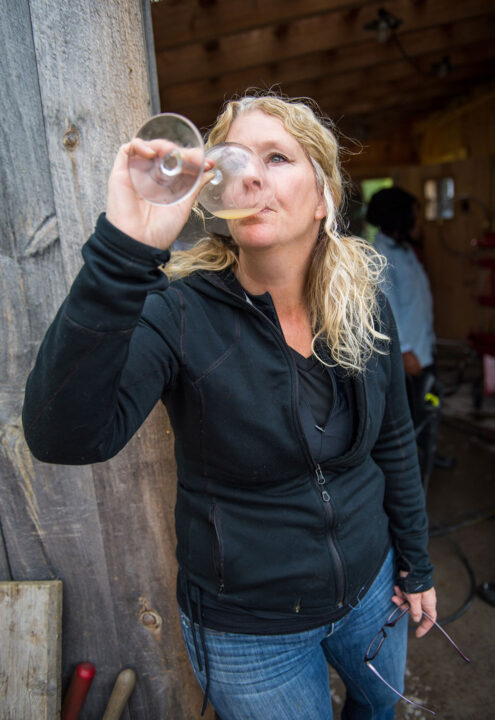
When Ross first heard there was a female winemaker in Vermont making natural wines with hybrid grapes, she recalled, “I said, ‘Wait a minute. That’s crazy.’” Heekin is a pioneer in many ways, Ross said, “as a female, as an American producer not in a state we think of for wine. And her wines do an incredible service to hybrid grapes.”
During her first two years, Heekin followed biodynamic practices very closely. In addition to laboriously applying protective plant-based medicines daily and paying meticulous attention to the whole vineyard ecosystem, she tracked how the vines responded to the lunar cycle and scheduled work like pruning accordingly. She later took an intensive biodynamics course in France where the students went so far as to taste the soil to evaluate it. While skeptics dismiss biodynamics as mystical at best, Heekin became a believer through tangible results. With 11 acres under vine now spread over three locations in Vermont, biodynamic principles still guide her but, “we are not dogmatic,” she said. “We believe really strongly in the fluidity of honest experimentation.”
In Vergennes in late July, Heekin’s assistant had just sprayed the vineyard with a solution of kaolin clay, nettle tea, and elemental sulphur, which sparkled softly from the leaves like fairy dust. After a wet and humid week, the biodynamic treatment was intended to help prevent downy and powdery mildew. A conventional grower, Heekin said, would likely spray antifungal chemicals a couple times a season no matter what, and also use herbicides to keep weeds and grass in check. “You sacrifice the health of the soil when you do that,” Heekin said. A fundamental biodynamic tenet is that natural diversity has immense value; allowing a variety of plants and wildlife to thrive provides critical clues and services to both the cultivated crop and to overall landscape health. Heekin pointed out abundant Queen Anne’s lace among the vines.
“It is nature’s way of managing compacted clay soils—because the roots are a natural tiller,” she explained. But sometimes, she added, “nature needs a little help,”so she and her crew till between rows to help break up and aerate the earth.
Vergennes is always the first of the vineyards ready for harvest. Depending on the season, picking starts as early as Labor Day followed by intense weeks of harvests and winemaking with repeated trips between Vergennes, West Addison, and Barnard. Although La Garagista wines are distributed in New England, New York, and California as well as in several European countries, production is still tiny. Last year, the winery produced 800 cases, fewer than 7,000 bottles of wine. The goal is to reach 2,000 cases over the next five years. “I don’t want to be bigger,” Heekin said. “I want to be in the field.”
In the spring of 2017, stretched thin between the demands of the growing winery and busy restaurant, Heekin and Barber closed Pane e Salute after more than two decades. “It’s allowed for some opening up of creativity for both of us,” Heekin said. Barber started writing a regular recipe column for the Boston Globe and is working on a cookbook project. Heekin is developing a book proposal on hybrid grapes and the future of wine. Their new, cozy, on-farm Hart Tavernetta hosts events and pop-up gatherings for which Barber still cooks. “Our original idea when we first came back from Italy was a table at the center of the farm,” Heekin said. “It’s taken 20 years, but now we’re there.”
Early on a Tuesday last October, about 10 people gathered in Barnard at the home farm and winery to help with winemaking, including the traditional grape-stomping of frontenac gris picked the day before. Prince was playing over the sound system and assistant winemaker Krista Scruggs was extracting deep ruby juice from a batch of crushed grapes.
The harvest was well under way though a little later than usual due to the summer’s wet start. “You work with what nature gives you. It’s different every season,” Heekin said. “Others strive for consistency, but we shoot for expressing that difference in each season.” Difficult years, she added, are almost more valuable: “They give you new insights, new possibilities.” Heekin sipped thoughtfully from a glass of wine in mid-fermentation made a couple weeks prior. “We try to taste a lot during harvest to inspire ourselves,” she said. Tasting is critical to understanding wine development and to gauge its long-term potential. “What I’m looking for is that narrative arc,” she explained. “We’ve been talking a lot about the mid-palate of wine. It might have a nice beginning and end, but it’s not good when the middle falls out of a wine.” Texture is also important: “how it feels in the mouth, on the tongue,” she added. “Then there’s the liveliness, this little burst of light on the palate, this kernel in the flavor that is alive.”
Scruggs, a 33-year-old Californian, was in her second season at La Garagista; she has since launched her own Zafa Wines, working in both Vermont and Texas, and was just named to Wine Enthusiast’s Top 40 Under 40 Tastemakers of 2018. Heekin and Barber inspired and empowered the young winemaker to start her own label, she said. In addition to wine knowledge, Scruggs credited the couple with much deeper lessons. “Learning to be patient, not necessarily with the wines but with other people,” she said. “They’ve been doubted, but they never get riled up. They are the epitome of what is not ego.” Heekin takes her role as a mentor seriously, particularly for women. Another title she claims proudly is “vigneronne,” the female version of the French vigneron. It is a word that Asimov used to describe her. “She embodies the French term: someone who grows grapes and shepherds them into wine,” he said. “Her technique of nonintervention is superb. She is so attuned, and it is her skills and passion and intuitive understanding that make her wine so superb.”
Whether gender has shaped her philosophy is impossible to tease out, but Heekin acknowledged her role as a woman in wine: “I do bring a certain set of things from my gender that are different from males. And there are still relatively few of us.” Ross, of Bon Appétit, who previously worked in the entertainment industry, lamented the dearth of mutual support among women in traditionally male-dominated fields. “I think what Deirdre is doing is so impactful,” Ross said. “She’s helping other women come up. She’s the Amy Poehler of wine.”
In Barnard, outside among the apple trees, a long table was set with mismatched plates, jelly jars for water next to wine glasses, and vases of cosmos picked from between the vines with dahlias from the flower gardens. Chickens strutted about, free-ranging through the kitchen garden and out back under the plum trees. Barber sliced sunset-hued tomatoes on the balcony that serves as his summer outdoor kitchen. There was local smoked chicken, grilled eggplant, and red potatoes from the gardens, half a wheel of Vermont cheese, and fresh bread.
And there was wine, of course, including wine-to-be: just-pressed, very slightly fermented juice of grapes harvested the day before. With theatrical flair, Barber sabered open a bottle of House Music, a pétillant naturel, a softly effervescent blend of six grape varieties fermented together. There were also bottles of Vinu Jancu, made from la crescent fermented on the skins in an open vat in the style of vin jaune from the Jura, and Damejeanne, the Vermont red made with marquette.
Each wine spoke in a different way to the vintage, vineyard, and grapes from which it had been crafted. They shimmered with ripples of limestone, alpine strawberries, white currants, and green apples. The assembled crew raised their glasses to the soil and the fruit, to the community gathered around the table, and to the vigneronne who had a vision for what Vermont wine could be.
Melissa Pasanen is an award-winning freelance journalist specializing in articles on food and agriculture for a variety of regional and national media. She lives in Vermont and is a regular contributor to Seven Days newspaper and Vermont Public Radio’s weekly food series.
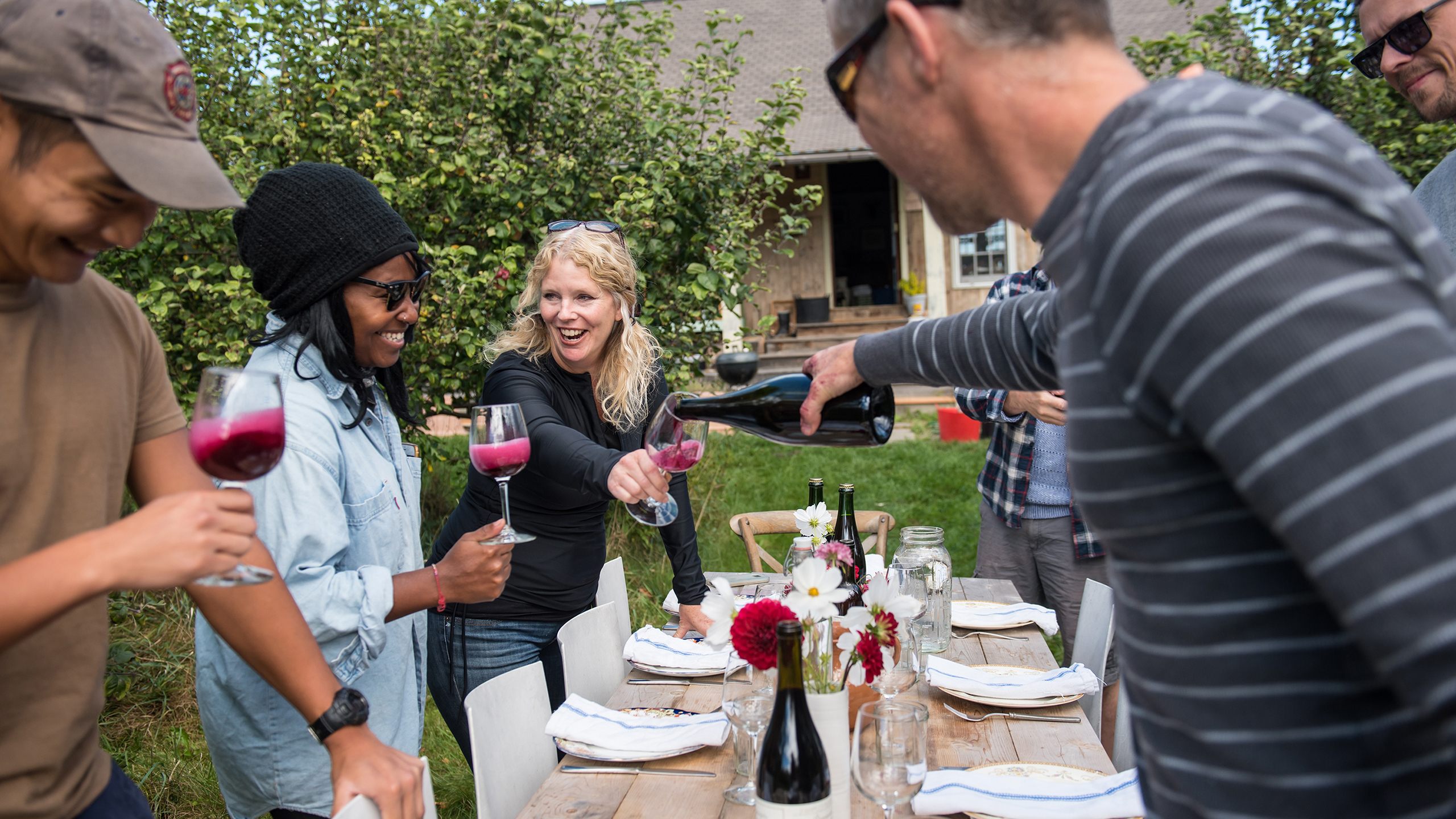
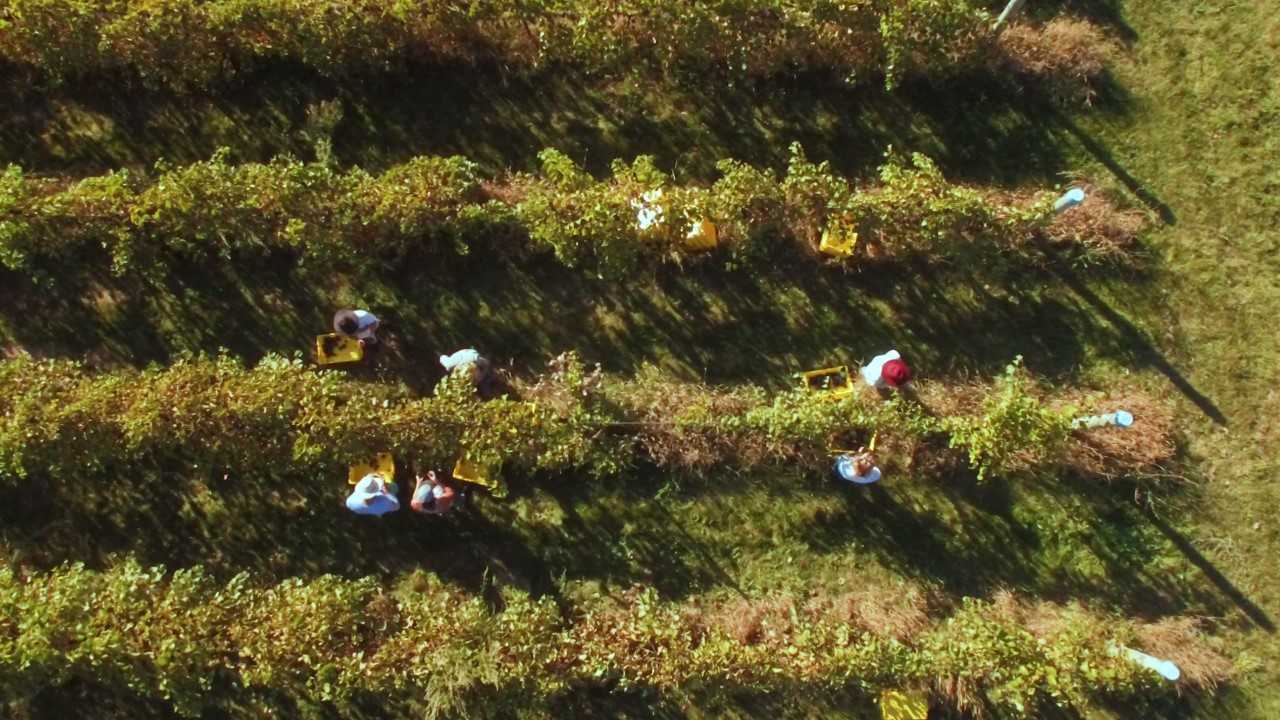
Leave a Reply